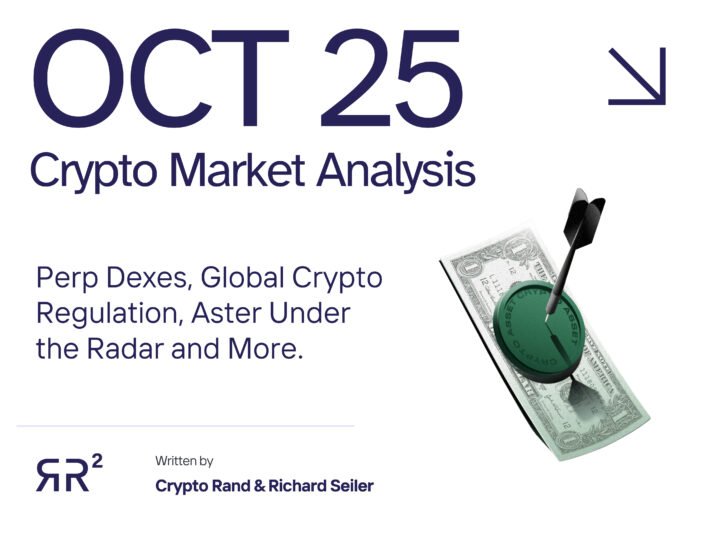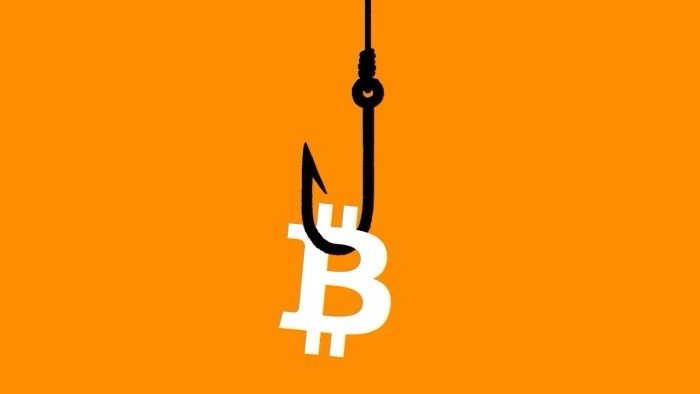Top 3 Crypto Real World Assets to Watch in 2024: Future Market Leaders

Prepare to embark on a journey into the future of real-world assets in the rapidly evolving crypto space. We’re about to delve into the “top 3 real world assets in crypto to watch in 2024”, and the revolutionary blockchain technologies that power them.
Key Takeaways
- Chainlink Labs (LINK), Avalanche Network (AVAX), and Centrifuge (CFG) are prominent crypto real-world assets in 2024, with potential in security, scalability, and DeFi liquidity for real-world assets respectively.
- Advancements in blockchain technology have led to improved scalability through solutions like subnets, enhanced security with measures such as zero-knowledge proofs, and increased interoperability with cross-chain communication protocols.
- The crypto space is experiencing a surge in institutional involvement, significant regulatory developments, and the exploration of new use cases like asset tokenization and influence in buy-side financial markets.
Top 3 Crypto Real World Assets in 2024

Entering 2024, Chainlink Labs (LINK), Avalanche Network (AVAX), and Centrifuge (CFG) are three world powered crypto real-world assets set to make their mark globally. Each of these has demonstrated significant potential and innovative applications, making them the ideal candidates to watch in the crypto space this year.
Asset 1: Chainlink Labs (LINK)
Chainlink Labs (LINK), a decentralized oracle network, facilitates universally connected smart contracts, prioritizing security and reliability. This network serves as a connection between smart contracts and real-world data, guaranteeing the accuracy and reliability of the data utilized in the contracts. Chainlink’s emphasis on security and dependability preserves the integrity of the on-chain data, establishing it as a reliable choice for smart contract applications, even during periods of all-time high network usage.
Since its inception, Chainlink Labs has been remarkable for its numerous significant developments and advancements. These include the mainnet launch of Chainlink Data Streams and the collaboration with Tencent Cloud, a prominent global cloud company. As Chainlink Labs continues to address the blockchain oracle problem, users can expect enhanced security, reliability, and efficiency in data processing.
Asset 2: Avalanche Network (AVAX)
Competing with Ethereum, the Avalanche Network (AVAX) serves as a cryptocurrency and blockchain platform. AVAX, the native token of the Avalanche blockchain, boasts of the following features:
- Speed and scalability with a capacity of up to 4,500 transactions per second
- Interoperability
- Smart contract capabilities
- Cost-effective and environmentally friendly solution
- More predictable transaction fees compared to Ethereum
The Avalanche Network offers developers advanced tools for:
- Developing Solidity-compatible dapps
- Creating fixed and variable cap assets
- Creating non-fungible tokens (NFTs)
- Building custom applications
It also provides secure and scalable transactions, enabling thousands of transactions per second at low fees, thereby enhancing accessibility for users.

Asset 3: Centrifuge (CFG)
Designed to facilitate DeFi liquidity for real-world assets, Centrifuge (CFG) is a blockchain-based decentralized protocol. It offers the following benefits:
- Establishes a connection between real-world assets and the DeFi ecosystem
- Decreases capital costs for small and medium-sized enterprises
- Introduces new investment prospects for DeFi investors.
The primary features and advantages of Centrifuge (CFG) include bridging real-world assets to DeFi, reducing capital costs for SMEs, and incentivizing users with Centrifuge tokens. Through tokenization, Centrifuge supports the integration of various asset types into the DeFi ecosystem, providing new avenues for investing and trading.
Blockchain Technology Advancements
Significant advancements in the blockchain industry have reshaped the landscape of the crypto space. Innovations such as scalability solutions, enhanced security measures, and interoperability and integration have been instrumental in overcoming the challenges associated with cryptographic guarantees, transaction processing, wallets, and coins.
Scalability Solutions

Scalability represents one of the key challenges that blockchain technology continues to grapple with. However, recent advancements, such as Avalanche’s subnets architecture, have made significant strides in improving scalability. This architecture facilitates the creation of custom blockchains or ‘appchains’ through subnets, with the Astra Upgrade further improving the independent operation of application-specific chains within the ecosystem.
Current solutions in 2024, such as Ethereum 2.0, Layer 2 solutions, and smart contracts powered by blockchain, have emerged as effective scalability solutions. These solutions contribute to the acceleration and optimization of blockchain networks by streamlining transaction processing and enhancing the network’s throughput.
Enhanced Security Measures
Additionally, blockchain technology has significantly enhanced security measures to safeguard users and their assets. Recent advancements include:
- Improved encryption
- Smart contract auditing
- Zero-knowledge proofs
- Expansion of decentralized finance (DeFi)
These developments are intended to enhance the integrity, confidentiality, and security of data within blockchain systems, benefiting node operators.
Enhanced security measures in blockchain safeguard users’ assets through a range of methods including access control, cold storage, multi-signature wallets, and robust security measures implemented by exchanges and platforms. Blockchain networks uphold data integrity through the implementation of diverse security measures, such as robust cryptographic algorithms, consensus mechanisms, network security measures, and encryption and digital signatures.
Interoperability and Integration
As blockchain networks establish connections with each other and traditional financial systems, interoperability and integration have gained increased importance. Blockchain is achieving interoperability through the implementation of cross-chain communication protocols, interoperability platforms, and standardization efforts, which enable different networks to exchange data and assets.
Integration of blockchain with traditional financial systems leverages the decentralized and transparent nature of blockchain technology to enhance the efficiency, security, and speed of financial transactions. The integration of blockchain with traditional financial systems provides advantages such as:
- Heightened efficiency by minimizing the reliance on intermediaries
- Improved transparency through a public ledger of transactions
- Enhanced security through cryptographic measures

Adoption and Regulation
With the maturation of blockchain technology, adoption and regulation have emerged as critical areas of focus. This section explores institutional involvement, regulatory developments, and future use cases, shedding light on the evolving landscape of the crypto space.
Institutional Involvement
The crypto space has witnessed a steady increase in institutional involvement, characterized by more financial institutions launching blockchain products and a rise in digital bond issuance. The growth of institutional tokenization is projected to persist in 2024, as more financial institutions, including major entities such as JPMorgan Chase & Co and HSBC Holdings, are expected to introduce tokenization products.
Institutional involvement enhances the credibility of cryptocurrencies, drawing more investors into the market, and facilitates the functioning of cryptocurrency markets, thereby increasing accessibility for the general public. The legitimacy established by institutional involvement has the potential to attract more investors and bolster the adoption of cryptocurrencies as a legitimate asset class.
Regulatory Developments
The shaping of the crypto industry persists with regulatory developments, as more regulators provide guidance on managing the unique aspects of crypto-assets. Recent updates include the potential introduction of spot bitcoin exchange traded funds (ETFs) in the US and comprehensive new guidelines for crypto in the EU, with regulators offering guidance on the governance of tokenized assets.
Regulatory developments have a positive impact on the investment environment by:
- Creating sandbox environments for testing new projects
- Enforcing compliance with local regulations and securities laws
- Engaging with industry stakeholders
Effective regulation, coupled with an open-minded approach and enhanced technological understanding among regulators, can serve to foster cryptocurrency adoption.
Future Use Cases
The expansion of future use cases for blockchain technology and crypto-assets will continue, encompassing novel asset tokenization, stablecoin proliferation, and a shift towards the buy-side. The innovative applications of crypto assets in asset tokenization involve representing the ownership rights of real-world assets as digital tokens on a blockchain, providing new avenues for investing and trading in traditional assets.
Blockchain technology is also exerting influence on buy-side financial markets by facilitating the direct trading of public securities and digital tokens and enabling the secure and automated sharing of sensitive data sources among independent entities. This facilitates the practical and tangible utilization of digital assets and blockchain in financial transactions.
Summary
In summary, the crypto space is set for an exciting future, with real-world assets like Chainlink Labs (LINK), Avalanche Network (AVAX), and Centrifuge (CFG) leading the way. Coupled with advancements in blockchain technology and regulatory developments, the stage is set for increased adoption and acceptance of cryptocurrencies. As we continue to explore the infinite possibilities that blockchain technology offers, let us remember that we are not just observers but active participants in this new world powered by cryptographic guarantees.
Frequently Asked Questions

Which crypto will explode in 2024?
Bitcoin is expected to experience significant growth in 2024, with the potential for high gains and a price peak projected at $109,364.
Which crypto to boom in 2024?
Consider investing in Solana in 2024, as it has the potential to handle many transactions per second with minimal fees and has a robust ecosystem and partnerships contributing to its growth and adoption.
What are the recent advancements in blockchain technology?
Recent advancements in blockchain technology encompass scalability solutions, enhanced security measures, and improvements in interoperability and integration, enhancing its overall efficiency and effectiveness.
How is institutional involvement affecting the crypto space?
Institutional involvement is enhancing the credibility of cryptocurrencies, attracting more investors, and facilitating the functioning of cryptocurrency markets, thereby increasing accessibility for the general public. This is leading to a significant impact on the crypto space.
What recent regulatory developments have occurred in the crypto industry?
In recent times, there have been significant regulatory developments in the crypto industry, such as the potential introduction of spot bitcoin exchange-traded funds (ETFs) in the US and comprehensive new guidelines for crypto in the EU. These developments reflect growing regulatory interest and potential changes in the industry.




